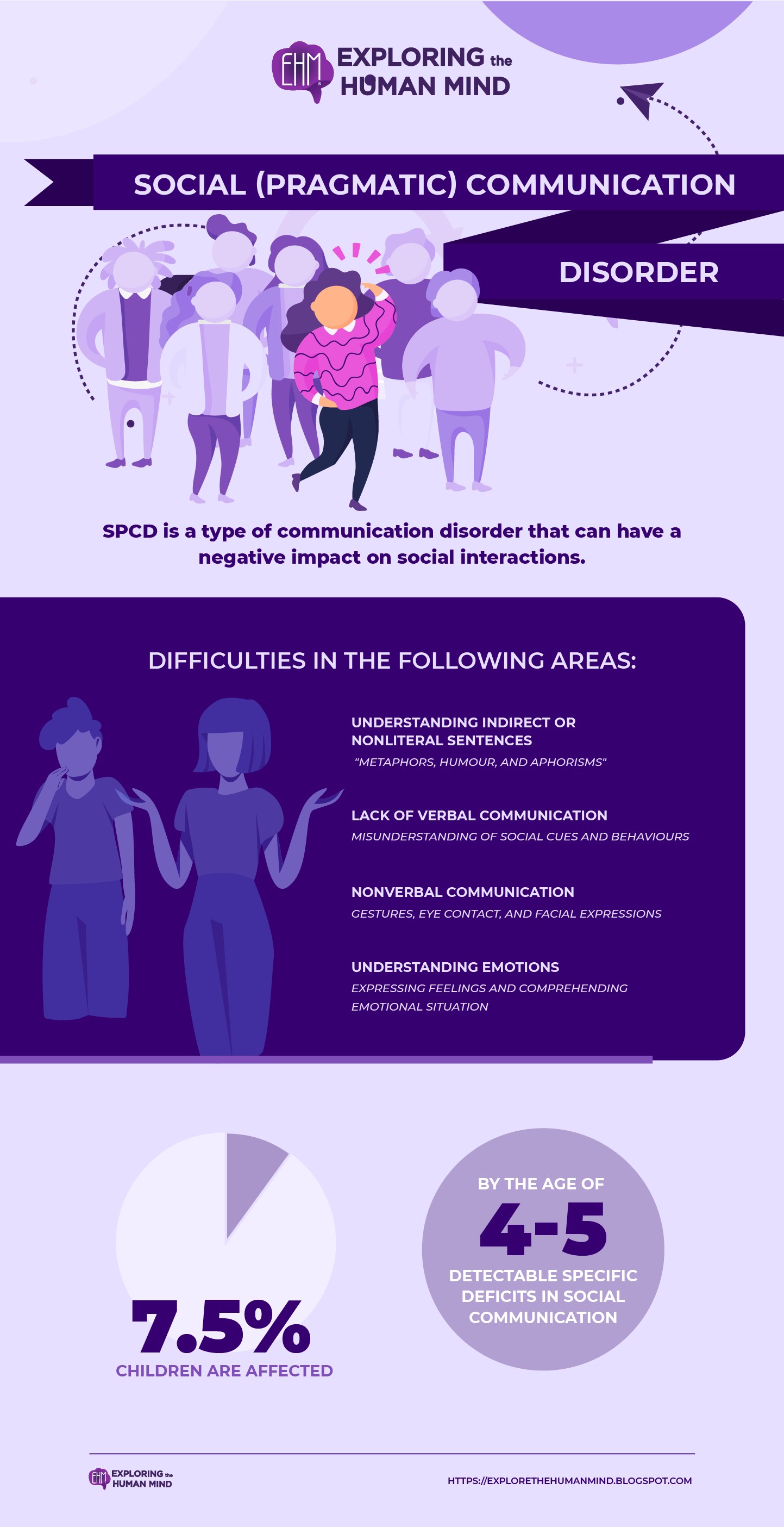Social (Pragmatic) Communication Disorder
Individuals can share their experiences, ideas, and emotions through social communication. Social communication skills are required for language expression and comprehension in nonverbal, spoken, written, and visual-gestural (sign language) modalities.
Pragmatics is the process of interpreting your surroundings in order to deduce the meaning of linguistic context. Individuals who have SCD experience difficulties in the following areas of social communication:
- Understanding indirect or nonliteral sentences, such as "metaphors, humour, and aphorisms"
- Lack of verbal communication as a result of a misunderstanding of social cues and behaviours, such as not always knowing when or how to greet people or interjecting during a conversation before the appropriate time.
- Nonverbal communication, such as gestures, eye contact, and facial expressions, can be difficult for those with SCD to understand.
- Understanding emotions; people with SCD have difficulty expressing their feelings and comprehending the emotional context of a situation.

vectors by Freepick; graphic design by Vadot
Definitions
Social communication encompasses the following components:
- pragmatics—communication that focuses on goal-consistent language use in social contexts
- social interaction—communication that occurs between at least two individuals
- social cognition—an understanding of the mental and emotional states of self and others, social schemes, and social knowledge that beliefs and values cause social events, expected socially appropriate behavior and consequences of inappropriate behavior
- language processing—internal generation of language (expressive), and understanding and interpretation of language (receptive)
SPCD is a type of communication disorder that can have a negative impact on social interactions. While many of its symptoms overlap with neurodevelopmental disorders such as ADHD, the DSM-5 classifies SPCD as a separate condition. It is also considered a distinct disorder from ASD.
It is estimated that up to 7.5% of children have some form of pragmatic language impairment. Males are typically affected at a 2:1 ratio to females. SCD is uncommon in children under the age of four. Most children will have adequate speech and language abilities by the age of 4 or 5, revealing specific deficits in social communication.
While early detection of SPCD is critical for early intervention, you should not self-diagnose this condition. If you suspect you or a loved one is struggling with social communication, consult a doctor for guidance on the next steps.
Reference:
https://www.facebook.com/verywell. (2022). What to Know About Different Types Communication Disorders. Verywell Mind. https://www.verywellmind.com/communication-disorder-types-5220602#toc-types-of-communication-disorders
Cherney, K. (2021, May 13). Understanding Social Pragmatic Communication Disorder. Healthline; Healthline Media. https://www.healthline.com/health/childrens-health/social-pragmatic-communication-disorder#takeaway
Social (Pragmatic) Communication Disorder. (2021, March 29). PsychDB. https://www.psychdb.com/child/communication/social-pragmatic-communication-disorder#:~:text=The%20incidence%20and%20prevalence%20of,a%20ratio%20of%202%3A1.
Social Communication Disorder. (2013). Asha.org. https://www.asha.org/practice-portal/clinical-topics/social-communication-disorder/#collapse_5






Comments
Post a Comment